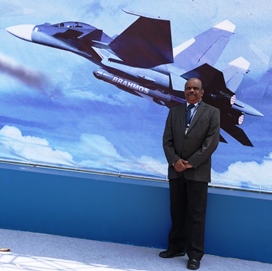Biography
ContactAbout School Life
A. Sivathanu Pillai was born in a humble family in Nagercoil town of Kanyakumari district in Tamil Nadu on the 15th of July 1947. From the very young age, Sivathanu Pillai was given the purpose of life - serve others. Sivathanu Pillai's father, Mr. Apathu Katha Pillai, was instrumental in Sivathanu Pillai understanding the purpose of life. The name Apathu Katha means 'one who saves from dangers'. True to that name Mr. Apathu Katha Pillai had saved many people from life threatening diseases and problems.
Mr. Apathu Katha Pillai, was a saint and expert in Siddha Medicine and also rare Yoga techniques like Raja Yoga - a practice through which, the person stops breathing but breaths internally. Mr. Apathu Katha Pillai, with his rare expertise in medical science had treated dreaded diseases - even cancer.
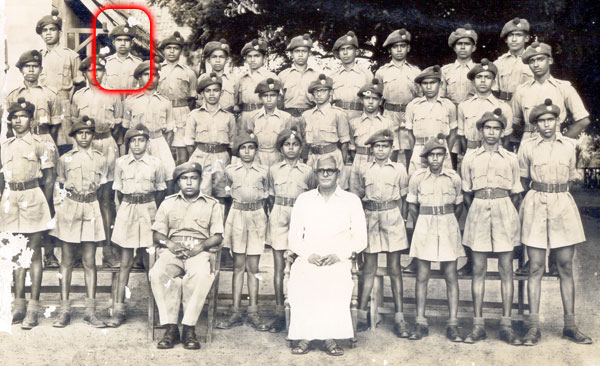
One such incident that happened to which Sivathanu Pillai was a witness changed his life. On one day, a man coming to Sivathanu Pillai's home in a car prostrated at his father's feet. He with tears in his eyes said that his wife was suffering from a terminal stage of illness and that the doctors who were treating her had told that it was impossible to cure her. He with tears pleaded Sivathanu Pillai's father to treat her. His father without any hesitation accepted to treat her and immediately set off along with this man for treating his wife. A few days later Sivathanu Pillai's father returned and spoke nothing about what happened. Further few days later, that man who came that day again prostrated at the feet of Sivathanu Pillai's father. This time also with tears - but those were the tears of happiness. Because his wife had been cured by the medicine prepared by his father and the 'strict diet and medicine' intake regimen prescribed by him. That man submitted huge amount of money at the feet of Pillai's father. But his father simply rejected that money and said, "My purpose is to serve others. Treating those who suffer is my duty. If I receive this money for this then my treatments in future will not be effective." Pillai, who witnessed this incident, understood that serving others should have a purpose.
In his school days, he was a meritorious student scoring cent percent marks in all the subjects. He was a favourite among all the teachers. Because of his talent and inquisitiveness nature Sivathanu used to be espeicially chosen by Principal and Inspector of Education to question and evaluate B.Ed teachers during their practical test sessions. He was also active in sports and used to participate in Football, Volleyball, Badminton and other games.
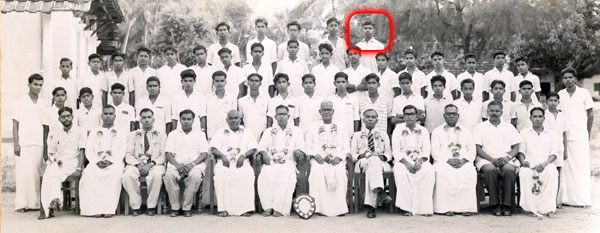
College Life
During a college level exhibition itself, Dr. Pillai had designed a small but novel electrical switching system, which was very much praised by Dr. Vikram Sarabhai - the father of Indian Space programs - who had visited that exhibition.
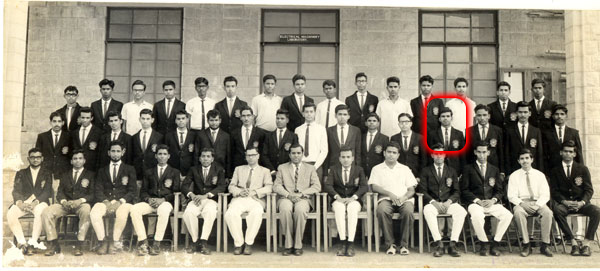
Harvard Experience
Dr. Apathukatha Sivathanu Pillai, an electrical engineer from Madras University and management expert from Harvard Business School, has contributed in India's major space research programmes along with Dr. Vikram Sarabhai, Dr. Satish Dhawan and Dr. A P J Abdul Kalam. During his tenure at ISRO he was a core team member of SLV III project. Dr. Pillai joined DRDO in 1986 and was the Programme Director of IGMDP under the leadership of Dr. Kalam. His most important contribution has been the development of critical technologies using a network of academic institutions, R&D laboratories, and industries through an innovative consortium approach and technology empowerment. Dr. Pillai evolved the unique concept of the most successful joint venture BrahMos, which is a world leader in the family of cruise missiles. He has been the prime force behind the Joint Venture from the Indian side right from its initial days, advocating "Mind to Market" concept for the joint venture.
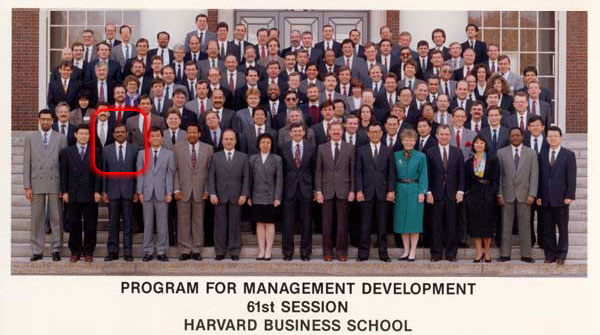
Life at Indian Space Research Organisation (ISRO)
Immediately after his graduation, Sivathanu Pillai joined Space Science & Technology Centre, Thiruvananthapuram in the year 1969 and worked in Systems Engineering of satellite launch vehicles (rockets). It was the formative years of ISRO under the able leadership of Dr. Vikram Sarabhai. He assisted Dr Vikram Sarabhai in the evolution of 10-year space profile for the country, the plans of activity. Later when the SLV-3 (the first Satellite Launch Vehicle of India) program was started, he became the core team Member of SLV-3, under the leadership of Dr APJ Abdul Kalam. In SLV-3, he contributed in the development of four stage rocket motors and rocket systems. SLV-3's first stage later became the booster of Agni missile. After the successful completion of SLV-3, he was the member of the PSLV (Polar Satellite Launch Vehicle) study team in the evolution of PSLV mission and a senior scientist in Aerospace Dynamics & Design Group. Later he became Technical Advisor to Prof Satish Dhawan, the Chairman of ISRO at its HQrs, Bangalore for Launch Vehicle Programmes. Vikram Sarabhai Space Centre (VSSC) formed a study group for the design of PSLV and a configuration was evolved. The original proposed configuration by VSSC was a huge vehicle weighing 400 tonnes with two large strap-on boosters making the propulsion system complex. Prof. Dhawan realised that the proposed configuration was complex and wanted to develop a reliable PSLV which would be the workhorse of ISRO and to be the core for the future launch vehicle projects in the years to come. So Prof. Satish Dhawan instructed Dr. Pillai to evolve an alternate configuration for PSLV with a team headed by Dr. Kalam. After two years of continuous working under the guidance of Prof. Satish Dhawan, a new configuration was evolved quite different and much lighter from what had been originally suggested. Today it is that evolved configuration of PSLV has become the main stay for ISRO to have successive successful launches injecting satellites in the polar orbits.
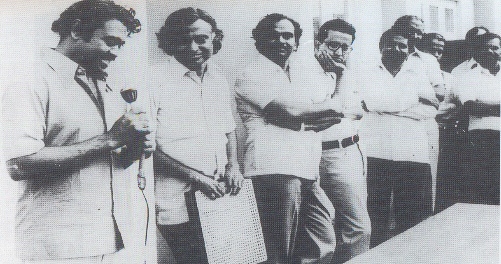
In Dr. Kalam's own words in his 'Wings of Fire', "I recall my working at ISRO HQ, Bangalore, as Director, launch Vehicle Programmes/System, in the early 1980s, when we were debating the performance and cost-effectiveness of launch vehicles. In 1981, the scientists of VSSC, Thiruvananthapuram, with the help of other ISRO centres, evolved a configuration of the PSLV core vehicle with two large strap-on boosters. The PSLV- weighed about 400 tonnes at take-off. Prof. Dhawan wanted to study an alternative and simple configuration. I and some of my colleagues, A. Sivathanu Pillai, N. Sundararajan and K. Padmanabha Menon, carried out mission, technology and feasibility studies for the optimal configuration. The team designed several options, including a unique core vehicle with an advanced solid propellant booster, using first stage rockets of SLV-3 as strap-ons. This brought the PSLV weight down to only about 275 tonnes at take-off."Not only PSLV but Dr. Pillai was also involved along with Dr. Kalam in an ambitious missile project called REX (Re-Entry Experiment), the prelude to Agni.
In Dr. Kalam's own words regarding REX in his 'Wings of Fire', "Meanwhile, I carried out an analysis of the application of SLV 3 and its variants with Sivathanu Pillai, and compared the existing launch vehicles of the world for missile applications. We established that the SLV 3 solid rocket systems would meet the national requirements of payload delivery vehicles for short and intermediate ranges (4000 km). We contended that the development of one additional solid booster of 1.8 m diameter with 36 tonnes of propellant along with SLV-3 subsystems would meet the ICBM requirement (above 5500 km for a 1000 kg payload). This proposal was, however, never considered. It nevertheless paved the way for the formulation of the Re-entry Experiment (REX) which, much later on, became Agni".
Life at Defence Research and Development Organisation (DRDO)
Seeing the success of SLV-3 program, Dr. Kalam was asked to lead the guided missile development programs of the nation by taking up the directorship of DRDL. The Integrated Guided Missile Development Programme (IGMDP) born. Dr. Kalam at DRDL, had to face difficulties in changing the working culture of DRDL to suit high technology development efforts. With great efforts exerted by Dr. Kalam, Dr. Pillai was sent to DRDL in deputation from ISRO as he was groomed to be the future leader of ISRO.
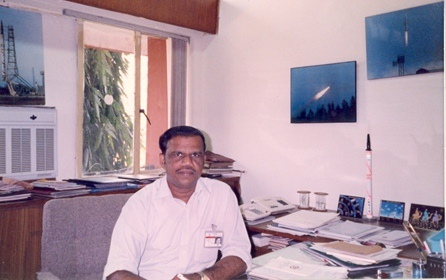
When Dr. Pillai moved to DRDL, as the Director, Planning and Programme Analysis, the design process was just over for the Prithvi and Agni missiles. But yet lot of developmental tasks were needed to be done to move the projects further. The IGMDP was a multi project missile development programme due to the development of five different types of missiles. But the unavailability of the required technologies, IGMDP became a vast technology development program intertwined with missile developments. This intertwining made it one of the most complicated technology development programmes in the world. The technologies were new and futuristic. The technology base with DRDL was very limited. So a large number of government labs, academic institutions, and private and government industries were used. The technologies were to be developed at multiple institutions and laboratories with networked organisations as well as to make them not to have open ended approach. These technologies were closely linked with the realisation of missile development. Dr. Pillai was to give a new accelerated thrust for technology development, networking different groups as well as programme management for the five projects. He helped Dr. Kalam to restructure DRDL to a unique matrix set up. In this new structure the importance of project directors were increased and they were empowered with more administrative and financial powers, as it was in ISRO. In DRDL the programme management culture was not at all existing then.
Uncertainties, complexities, different working cultures, various kind of attitudes, military environment, secrecy, egos, high average age group laboratories, and difficult procedures - all attacked IGMDP at the same time. The PSUs had the culture of undertaking production with elaborate training given by foreign industries. They had difficulties to accept IGMDP culture. Private industries wanted a commitment from the beginning for production so as to make profit. For tackling the difficulties in development, DRDL was reorganised in to a matrix structure of management. The evolved matrix structure enabled each missile project being given the required technology system with an identified systems manager. Also the technologies to be developed were given a systems manager. The systems manager used to oversee the technology development in his regime where as the project director used to oversee the entire missile project. They all reported to the programme management board that oversaw all the five missile projects. Each individual was to report to two bosses: the project director and the systems manager; through this matrix structure effective control was established.
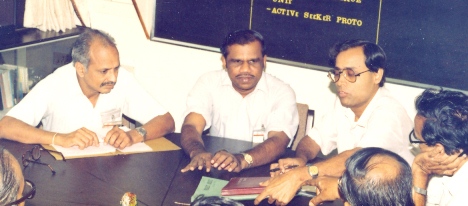
Only this matrix structure based program management helped to resolve conflicts, assign priorities, avoid duplications and enable lucid control of the process to stick to the schedule adhering to the objectives of IGMDP. Networking with multiple organisations and industries for technology development gave a real challenge for effective management along with inherent complexities. The complexities were multi-faceted - Networking of establishments and related management, Time criticality and Technology criticality and so on. Above all the multiple technology developments were intertwined multiple missile developments. Networking of establishments and activities monitoring was a hectic process in IGMDP. Today, we have internet that brings the world in our finger tips - the only issue is to use our fingertips on the keyboard. But in those days internet was just a concept in India. In those days in India computers were primitive, with monochromatic monitors displaying green fonts in a black background, being operated only in air conditioned rooms. In those days even a television was a rarity, a home with an antenna (dipole antenna) served as navigation references in residential areas. The younger generation would not have heard about these antennae lest to see. Today it is the era of DTH with DVD quality video and audio. In that era with Dr. Pillai at the helm, the programme management board had to find various industries, research laboratories and academic institutions manually through reports or personal contacts. They had to understand their expertise and capabilities and to delegate works.
In the IGMDP, as a whole more than 200 critical technologies and many sub critical technologies and so many less critical but important technologies were being developed. Everything was time bounded and he had to manage more than 20000 activities including technology research, technology development and product manufacturing. All these activities were carried out across the length and breadth of India. In those days in India, owning a telephone or a television was a luxury and those who were financially affluent were able to afford them. Cars - they were a rarity unlike today, where a person can buy a car and park it in his garage within a day. But those days one had to wait indefinitely for getting a car. The programme management directorate at DRDL monitored 22,000 activities comprising of research, development, production and testing that were being executed at various places across the length and breadth of India. The directorate had to receive reports on those 22,000 activities at a month end, analyse them, understand the progress and difficulties, address them. Not only that, the directorate had to issue the next tasks in those activities for the forth coming month also.
All those activities were time critical; all the developmental activities for a particular missile had to coincide at a predetermined time; some might take even more time, and efforts had to be put in to see that if that time could be reduced, how it could be done, feasibilities study, error corrections etc. The missile development was time bounded; almost each subsystem required some sort of technology development for it. The development of the missile cannot be stopped for want of that particular technology dependent subsystem. Worst case there could be so many subsystems requiring so many technologies for a missile.
So ultimately time was like a sword hanging over heads. Since, each second wasted eroded a percentage of the user’s confidence on DRDO’s capability to deliver the missile – Just not one missile but five missiles. Almost all the technologies involved in sub systems and sub-subsystems of a missile had to be developed that too under the Missile Technology Control Regime. Among these we had the directorate had to take care of personal issues, morale issues, material requirements, bureaucratic hustles etc. So it required an overall control scheme of the programme.. Dr. Pillai simply pulled it and the evolution of that scheme itself is a great outcome of IGMDP. Today due to the able leadership he provided, AGNI missile’s various versions, Prithvi missile’s various versions and the Akash missile – all have been inducted in to the armed forces of India.
Life at BrahMos Aerospace
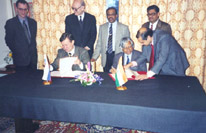
As the IGMDP emerged successful, DRDO looked out for cooperations to develop Cruise Missiles. This was also Dr. Pillai’s initiative. Under his able leadership, the joint venture was finalised with NPOM, Russia. After the joint venture company was started as BrahMos Aerospace, all started in the ascent towards the zenith. BRAHMOS was supposed to be just a supersonic anti-ship missile launched from coastal defence systems.
But it was Dr. Pillai’s effort that Indian Navy considered to mount BRAHMOS on their vessels. Today BRAHMOS is the premier fighting weapon for the Indian Navy. In due course, under the direction of Dr. Pillai, the possibility of converting the anti-ship missile to strike coastal targets from combat naval vessels was initiated. The study came out that it was possible. The land attack version was developed for the Indian Navy. During this period, sensing that Indian Army also wanted to buy a land attack missile from abroad, Dr. Pillai initiated efforts to convert the naval missile into a pure land based land attack missile. The missile was developed, produced and inducted in a fast track and for the first time in India, a military product was delivered ahead of time.
Notwithstanding that simple version, under Dr. Pillai’s leadership, a precision strike version of the land attack missile was developed as Block-II, to precisely strike a target situated among other buildings. This version has also been inducted in to the Indian Army. Next came the steep dive version developed as Block-III under his initiative. This version is for mountain strike missions. In the entire world, it is only BRAHMOS supersonic cruise missile which can fly downwards – whereas all other missiles only fly upwards. During these activities was going on, the air version of the missile went in to an active phase of development. In the near future, BRAHMOS will be launched from air also.
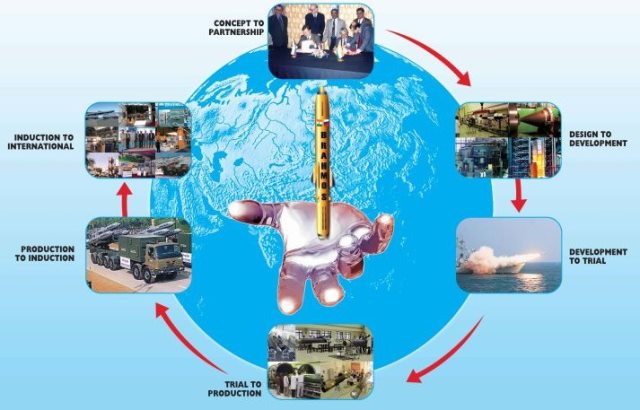
Recently, BRAHMOS was fired from a submerged platform – the precursor for the submarine launched version. This is the only supersonic cruise missile that can be fired from a submarine. Notwithstanding this expansion of capabilities, he also triggered the minds of the scientists to explore the possibility of using BRAHMOS against aerial targets. The results have been fruitful and in the near future BRAHMOS will be made a true universal missile capable of being launched from underwater, water surface, land and from the aircraft and be targeted against warships, land and aerial targets. Never before in the missile history, a missile has been made this much capable, where as its beginning was just a humble anti—ship missile launched from coastal launchers. In the corporate side, he just made the company which was operating from a single room to spread its wings all over India.
Today BRAHMOS has state of the art production and research facillities matching international standards. Through his initiative, a sick PSU called as Keltec was acquired at Thiruvanandhapuram. This PSU was specialised in making aerospace components but was making loss due to lack of orders. Through his intervention that company which was almost insolvent was acquired and renamed as BrahMos Aereospace Thiruvanandapuram Ltd. Today it is becoming the second assembly line for the production of BRAHMOS missiles. Not only that, it is contributing to ISRO and BARC with their high precision manufacturing capabilities.
Under Dr. Pillai’s leadership, land was acquired from the Rajasthan State Government for the overhauling and maintenance facilities for the BRAHMOS missile systems. This happened when the company was delivering the ordered products. Foreseeing the requirement for the product support this effort was made, while the company was just delivering the deliverables. Simply saying, under Dr. Pillai’s leadership, a one room company called BRAHMOS has spread its wings all over India and keeping the enemies of India ever under fear.
